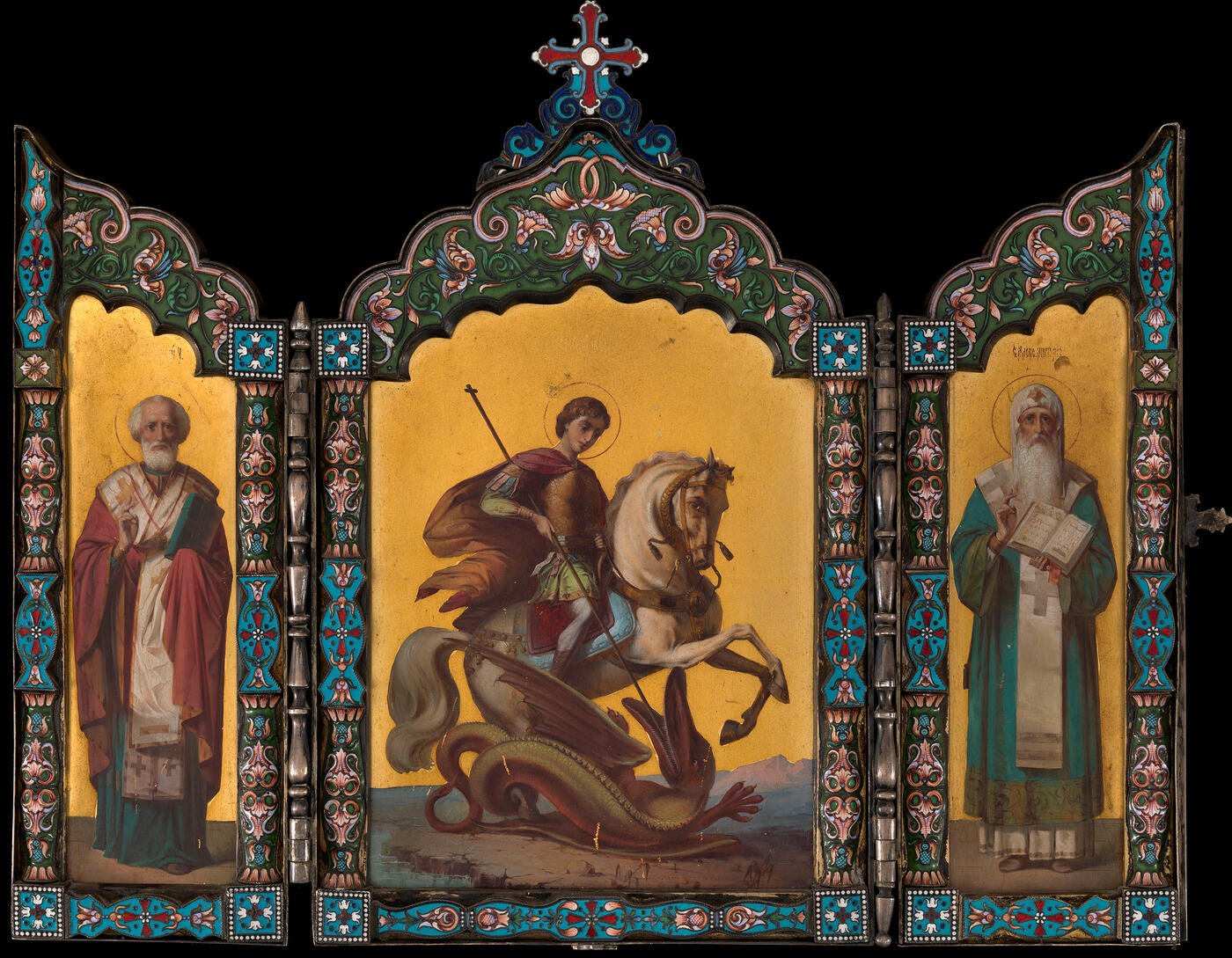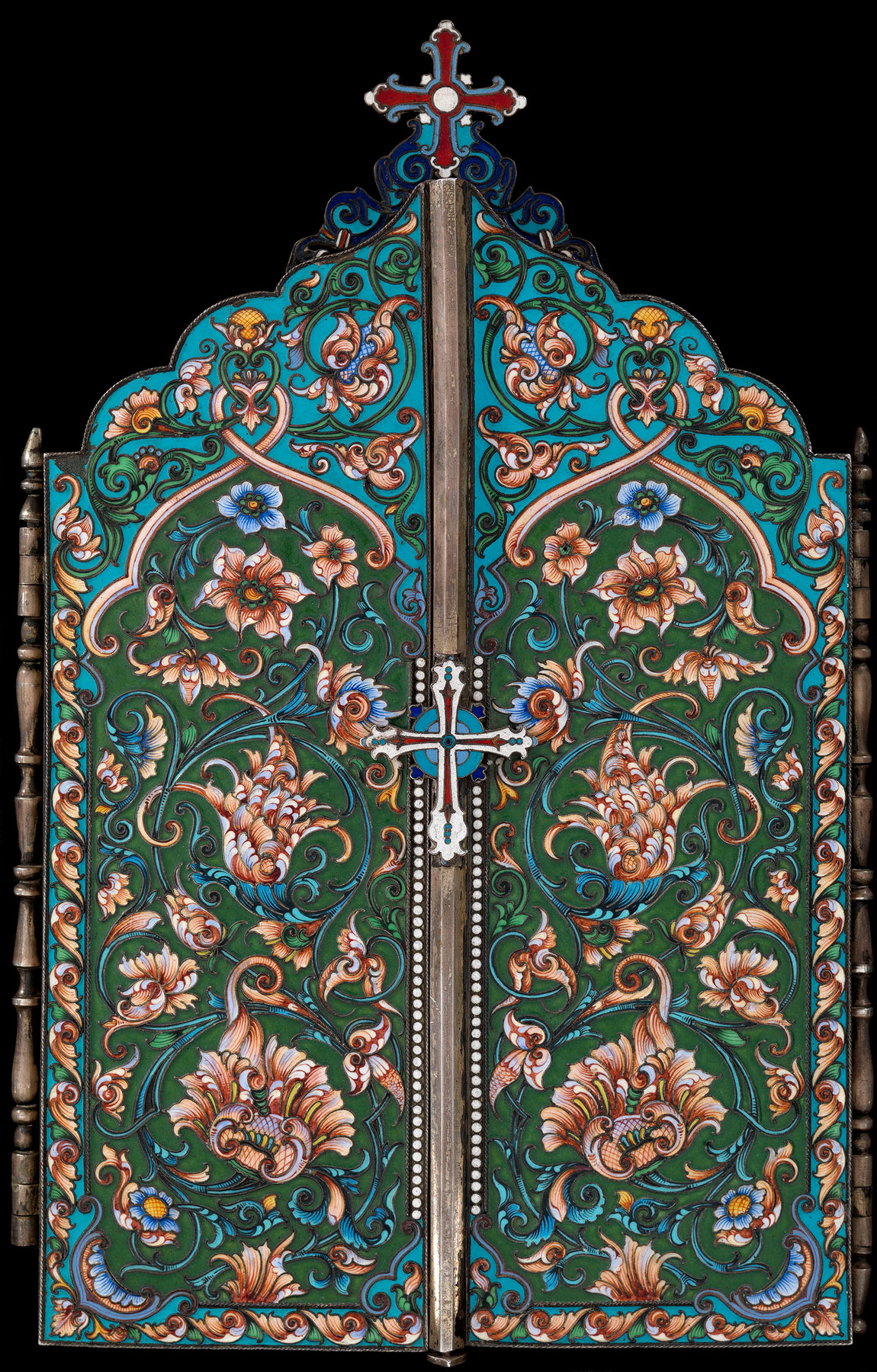MacDougall's Russian Art Auctions 1 December 2011
1 December 2011

513. AN IMPORTANT SILVER AND ENAMEL TRIPTYCH OF ST GEORGE WITH ST NICHOLAS THE MIRACLE WORKER AND ALEXEI THE METROPOLITAN OF MOSCOW
BEGINNING OF THE 20TH CENTURY, MAKER'S MARK OF VASILY AGAFONOV IN CYRILLIC, MOSCOW, 84 STANDARD
Extended 32.5 by 41 cm, closed 32.5 by 21 cm, weight 3,100 g.
100,000-150,000 GBP
Provenance: Anonymous Sale; Russian Works of Art, Sotheby’s New York, 14 December 1973, Lot 297.
Private collection, Europe.
Related literature: For similar work, see Sokrovischa Tserkovno-Arkheologicheskogo Kabineta Moskovskoi Dukhovnoi Akademii (Treasures of the Church Archaeological Department of the Moscow Theological Academy), Sergeev Posad, Patriarch’s Publishing Centre, 2004, p. 203.
The folding triptych depicting St George in the centre and St Nicholas the Miracle worker and Alexei, Metropolitan of Moscow on the side panels, was made in the workshop of the well-known Master silversmith Vasily Agafonov, in the years 1895-1917.
The academic manner of the saints’ depiction on the side and centre panels follows the ecclesiastical painting of V.M. Vasnetsov’s circle. This work was characterised by its emotional expressiveness, psychological depth and the power and majesty of the images. These icons — uniting ancient Byzantine and Russian images with new “revolutionary” 20th century painting techniques — gave visible expression to the religious and national aspirations in Russian society on the cusp of a new epoch.
The triptych’s striking polychrome cloisonné enamel frame is richly coloured and designed with exceptional refinement. The enamel decoration closely resembles the early 20th century icon of “St Nicholas of Myra” from the Moscow Theological Academy’s church archaeology collection.
The art of enamelling, which flourished at the turn of the 19th-20th centuries, is an integral part of Russian national culture and its decorative features had long attracted master craftsmen and patrons. The choice of saints and the richness of the design suggest the triptych was especially commissioned for presentation to a very eminent person. The saints depicted on the side panels are the namesakes of Emperor Nicholas II and his heir apparent, Tsarevich Alexei Nikolayevich. The longawaited heir, the imperial family’s fifth child, was born on 30 July 1904 and christened in the name of St Alexei, Metropolitan of Moscow and All Russia. The depiction of St George and the Dragon on the central panel not only reproduces the emblem of Moscow, but is also laden with triumphal and “victorious” meaning.
Thus the triptych, whose iconographic purpose encompasses prayers for the health of the two foremost figures of the Russian Empire, was most probably intended for ceremonial presentation to Emperor Nicholas II on behalf of high-ranking persons or institutions in Moscow.

Notes on symbols:
* Indicates 5% Import Duty Charge applies.
Ω Indicates 20% Import Duty Charge applies.
§ Indicates Artist's Resale Right applies.
† Indicates Standard VAT scheme applies, and the rate of 20% VAT will be charged on both hammer price and premium.